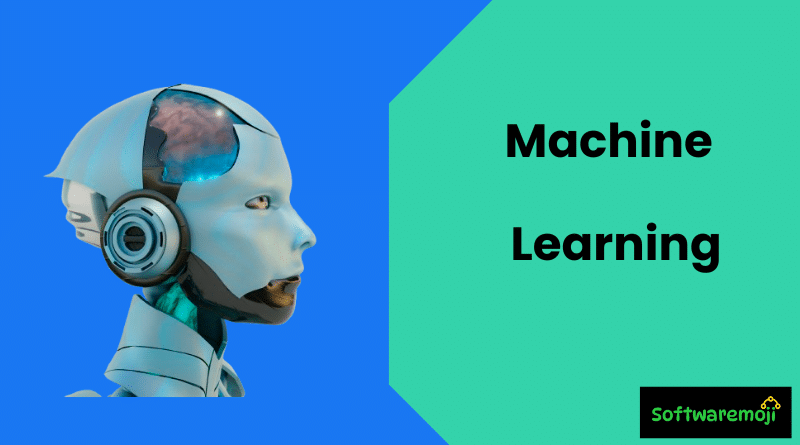
Machine Learning:
➡️What is Machine Learning?
Machine Learning (ML) is a subset of Artificial Intelligence (AI) where computer systems use algorithms to learn from data, improve over time, and make predictions without being explicitly programmed. By analyzing historical data, ML algorithms identify patterns and insights that help predict outcomes.
In practical terms, Machine Learning powers everything from personalized recommendations on Netflix to fraud detection in banking, making it a crucial part of modern AI applications.
➡️Machine Learning vs. Traditional Programming:-
The difference between Machine Learning and traditional programming is fundamental. In traditional programming, developers manually code each rule based on logic and expert knowledge. However, in Machine Learning, algorithms learn from data and adjust themselves to optimize performance, significantly reducing the need for manual coding.
➡️How Does Machine Learning Work?
Machine Learning works by feeding data into an algorithm and allowing it to learn the relationships between different variables. For instance, if a system is tasked with predicting whether a customer will make a purchase, it will analyze past purchase data and customer behaviors to build a model. This model can then predict future behavior based on similar patterns.
➡️Types of Machine Learning:-
- Supervised Learning-
Supervised learning involves training a model on labeled data (input-output pairs) where the desired output is known. The model learns to map inputs to outputs based on examples. Common algorithms include:- Linear Regression: Used for predicting continuous values.
- Classification: For tasks like spam detection or customer segmentation.
- Unsupervised Learning-
In unsupervised learning, the model is given unlabeled data and must find hidden patterns without prior knowledge of the outcomes. Techniques like K-means clustering or Hierarchical clustering group data based on similarities, and Principal Component Analysis (PCA) helps reduce dimensionality for better visualization.
➡️Popular Machine Learning Algorithms and Their Uses:-
- Linear Regression: Predicts a continuous outcome (e.g., house prices).
- Decision Trees: Used for both classification and regression tasks, helping to split data based on decision rules.
- Support Vector Machines (SVM): Effective for classification tasks, such as image recognition.
- Random Forests: Combines multiple decision trees to improve accuracy and robustness.
- K-Means Clustering: A popular unsupervised learning algorithm used to group data into clusters based on similarities.
➡️Applications of Machine Learning:-
- Healthcare:
In healthcare, ML is used for diagnosing diseases, predicting patient outcomes, and even in drug discovery. For example, image recognition algorithms help detect tumors in medical imaging. - Finance:
Banks and financial institutions use Machine Learning for fraud detection, risk management, and algorithmic trading, identifying patterns in historical data to predict future market movements. - Marketing:
Machine Learning helps marketers understand customer behavior and improve targeting strategies. Personalized advertising, customer segmentation, and product recommendations are common applications. - Autonomous Vehicles:
Self-driving cars use ML to process large amounts of data from sensors and cameras, enabling them to navigate and make decisions without human intervention.
➡️Challenges and Limitations of Machine Learning:-
While Machine Learning offers powerful solutions, it also comes with certain challenges:
- Data Quality: Machine learning algorithms require high-quality, diverse data to perform accurately. Insufficient or biased data can lead to incorrect predictions.
- Model Complexity: Some machine learning models, such as deep learning, require significant computational resources, making them expensive and time-consuming to train.
- Overfitting: If a model is trained too well on a specific dataset, it may fail to generalize to new data, leading to overfitting.
➡️Why is Machine Learning Important?
Machine Learning is revolutionizing industries by enabling computers to automate decision-making processes. Unlike traditional programming, ML can handle vast amounts of data and adapt to new information, improving accuracy and efficiency over time.
For example, in real estate, ML models can predict property values based on various features, such as location, size, and market trends, providing a more accurate pricing strategy than human experts alone.
➡️Machine Learning in Real-World Applications:-
- Google’s Self-Driving Car-
Google’s autonomous vehicles use ML algorithms to interpret data from various sensors and navigate roads safely, predicting the actions of other drivers in real-time. - Retail and E-commerce-
Platforms like Amazon and Netflix use ML to recommend products or shows based on past user behavior, optimizing the user experience and increasing customer satisfaction. - Supply Chain Optimization-
Machine Learning helps businesses forecast demand, optimize inventory, and improve delivery logistics, significantly reducing costs and improving operational efficiency.
➡️Conclusion:
Embracing the Future of Machine Learning:-
Machine Learning is a transformative technology that allows businesses and industries to unlock the potential of their data. Whether it’s improving healthcare outcomes, enhancing customer experiences, or driving innovation in autonomous systems, Machine Learning continues to shape the future of AI.
By understanding its fundamentals, applications, and challenges, you can better appreciate how ML is reshaping industries and impacting our daily lives.
This version is focused, emphasizes essential keywords, and optimizes readability for a broader audience interested in Machine Learning.
